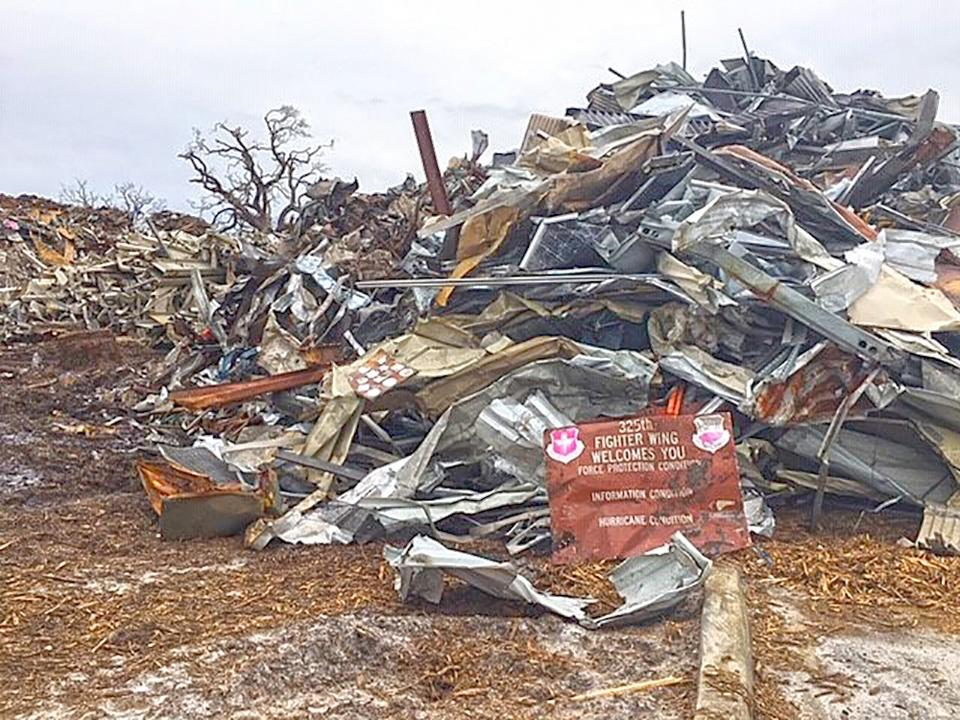New weather sensor proved its worth after Hurricane Michael
Date: Feb 22, 2019
Author: Ed Offley
Source: News Herald ( click here to go to the source)
A key item required for reactivating the airfield was obtaining continuous, reliable weather data. For that mission, the small team of airmen brought a state-of-the-art tool: a 4-pound, man-portable device capable of recording and transmitting detailed weather data via satellite to Air Force units worldwide.
TYNDALL AIR FORCE BASE -- Fewer than 12 hours after Hurricane Michael devastated this installation, the Air Force rushed an emergency response team across the country to assess the damage and restore runway operations.
A key item required for reactivating the airfield was obtaining continuous, reliable weather data to support both fixed-wing and helicopter operations. For that mission, the small team of airmen who deployed from Travis Air Force Base in northern California on a C-17 cargo aircraft brought a state-of-the-art tool: a 4-pound, man-portable device capable of recording and transmitting detailed weather data via satellite to Air Force units worldwide.
The Micro Weather Sensor, or MWS, uses solar power to capture weather data, including wind strength and direction, humidity, and air pressure. Advanced models can even measure cloud height. It is also capable of recording panoramic images of the sky for assessing airfield flight conditions. The weather data is then transmitted via commercial Iridium satellite to a central database maintained by the Air Force.
While the Air Force has already procured 300 MWS units under a 2018 contract with the developer, Intellisense Systems, Inc. in Torrance, Calif., the Tyndall response mission marked the first use of the sensor in an actual emergency situation.
Of particular significance to the team deployed at Tyndall, the hand-held MWS device replaced an older meteorological observing system whose components weighed nearly 200 pounds and filled an entire cargo pallet with five carrying cases. The weight and volume difference enabled the response team to bring in that much more emergency supplies to the base.
"The MWS provides a new level of capability and portability for aviation weather sensing, particularly in a remote or first-in setting," said Frank Willis, President and COO of Intellisense Systems, Inc. "The ability to provide uninterrupted weather observations during the disaster relief effort meant getting supplies directly to those families in need."
The MWS unit at Tyndall operated nonstop for three days providing critical weather data to the Air Force recovery effort, Willis added.
Author: Ed Offley
Source: News Herald ( click here to go to the source)
Featured firm in this article: Intellisense Systems Inc of Torrance, CA
 |
TYNDALL AIR FORCE BASE -- Fewer than 12 hours after Hurricane Michael devastated this installation, the Air Force rushed an emergency response team across the country to assess the damage and restore runway operations.
A key item required for reactivating the airfield was obtaining continuous, reliable weather data to support both fixed-wing and helicopter operations. For that mission, the small team of airmen who deployed from Travis Air Force Base in northern California on a C-17 cargo aircraft brought a state-of-the-art tool: a 4-pound, man-portable device capable of recording and transmitting detailed weather data via satellite to Air Force units worldwide.
The Micro Weather Sensor, or MWS, uses solar power to capture weather data, including wind strength and direction, humidity, and air pressure. Advanced models can even measure cloud height. It is also capable of recording panoramic images of the sky for assessing airfield flight conditions. The weather data is then transmitted via commercial Iridium satellite to a central database maintained by the Air Force.
While the Air Force has already procured 300 MWS units under a 2018 contract with the developer, Intellisense Systems, Inc. in Torrance, Calif., the Tyndall response mission marked the first use of the sensor in an actual emergency situation.
Of particular significance to the team deployed at Tyndall, the hand-held MWS device replaced an older meteorological observing system whose components weighed nearly 200 pounds and filled an entire cargo pallet with five carrying cases. The weight and volume difference enabled the response team to bring in that much more emergency supplies to the base.
"The MWS provides a new level of capability and portability for aviation weather sensing, particularly in a remote or first-in setting," said Frank Willis, President and COO of Intellisense Systems, Inc. "The ability to provide uninterrupted weather observations during the disaster relief effort meant getting supplies directly to those families in need."
The MWS unit at Tyndall operated nonstop for three days providing critical weather data to the Air Force recovery effort, Willis added.





